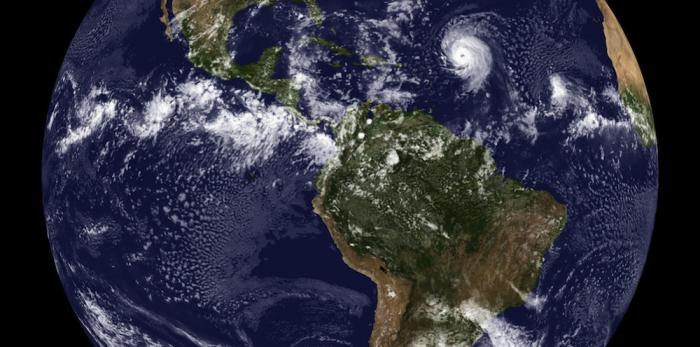Theoretical studies of the greenhouse effect indicate that a rise in the level of the greenhouse gases will tend not only to warm the Earth’s surface and the lower atmosphere but also to cool the stratosphere. This cooling of the stratosphere is expected to affect the ozone layer by decreasing ozone destruction in equatorial regions and increasing ozone destruction in polar regions. These effects would be added to the increased ozone destruction expected due to rising chlorofluorocarbon concentrations.
The stratospheric cooling by the greenhouse gases combined with these ozone layer changes will in turn affect the circulation at this level and conceivably at lower levels also. Indeed, there is already some evidence that Antarctic ozone changes have been influencing the Southern Hemisphere springtime climate by delaying the final warming.CGCS researchers are extensively involved in laboratory and theoretical studies to address two general interrelated goals: to understand quantitatively the elementary chemical steps at the molecular level that enable reliable extrapolations to atmospheric conditions; and to understand the interrelationship between chemical and atmospheric processes in order to elucidate the relevant chemical reactions that affect the atmosphere on regional and global scales. Following are two areas of interest to CGCS researchers.
Stratospheric Change Models
Models of stratospheric change that include interactive fluid dynamics, radiation physics, ozone chemistry and stratosphere-troposphere coupling are being pursued. As a first step, a “semi-interactive” model of the mean meridional structure and circulation of the stratosphere is being developed. The model is semi-interactive in that it includes an accurate radiation scheme and thus permits the radiative heating and cooling of the stratosphere to change in response to changing composition.
Studies of Ozone Destruction Mechanisms
In order to determine the ultimate fate and effects of chemicals, either natural or anthropogenic, emitted into the atmosphere the rates of elementary atmospheric reactions involving these chemicals and their reaction products must first be determined. Knowledge of these rates has been considerably improved by laboratory studies over the past decade. However, a better knowledge of the full range of potentially important chemical reactions is needed in order to improve the ability to model and predict the effects of various chemicals on the environment. Fundamental chemical and physical processes involved in ozone destruction are being investigated through experimental and theoretical studies. Of particular interest for inclusion in models is the heterogeneous chemistry at high latitudes and its sensitivity to stratospheric cooling and increased polar stratospheric clouds.



